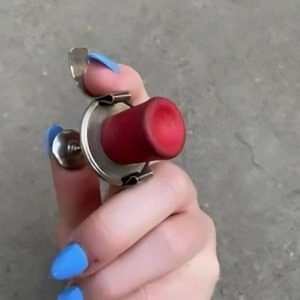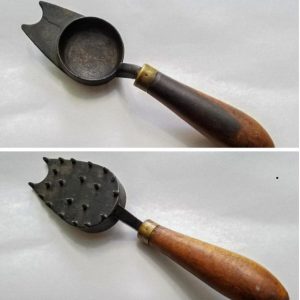Let’s rewind to a time when dental care wasn’t just something we did—it was something we played with. If you ever stared at your own grin in the mirror, mouth stained a shockingly bright pink, you probably remember this quirky little icon of the past: the disclosing tablet.
Before apps tracked your brushing habits or electric toothbrushes vibrated in 30-second intervals, these cheerful chewables turned brushing your teeth into a full-blown adventure. And believe it or not, they weren’t just gimmicks—they were revolutionary tools in shaping how an entire generation learned about oral hygiene.

What Exactly Was a Disclosing Tablet?
At first glance, disclosing tablets looked like candy. Small. Colorful. Tucked in tiny paper wrappers. But chew one, and suddenly your teeth would light up in vibrant pink or red wherever plaque hid.
That was the magic. The tablet contained a harmless dye that clung to plaque, making it visible to the naked eye. It turned a routine chore into a personal detective mission—spot the pink, brush it away.
And for parents and dentists? It was genius. It didn’t just tell kids how to brush better. It showed them.
Video: How To Use Plaque Tablets (Disclosing Tablets Explained)
The Colorful Birth of a Dental Game-Changer
Disclosing tablets first appeared in dental circles in the mid-20th century. Back then, most people brushed their teeth quickly, without understanding where plaque lingered. Dentists needed a better way to educate patients. Something simple. Visual. Memorable.
By the 1960s, these tablets were being handed out in school health programs and dental offices. Suddenly, brushing wasn’t just about technique—it was about results. You saw exactly what you missed.
And let’s be real—turning your mouth bright pink was fun. It made dental care less intimidating and way more engaging. Kids giggled. Parents approved. Dentists cheered.
How These Tablets Became a Bathroom Staple

By the ‘70s and ‘80s, disclosing tablets had earned their place in medicine cabinets across the country. Families made them part of weekend routines. Dentists slipped them into every kid’s goody bag. Schools even organized “cleanest teeth” competitions using these tablets.
It wasn’t just about hygiene—it was about family bonding. Parents stood behind their kids at the mirror, watching them scrub away the pink like little warriors battling tooth monsters. The goal? A pearly white smile with zero pink left behind.
And it worked. Habits formed. Techniques improved. And brushing your teeth started to feel a little less like a chore.
Fun Facts You Probably Didn’t Know

Let’s take a quick dive into some of the quirky and lesser-known sides of these colorful classics:
- School Demos Were a Big Deal: In many public schools, dental educators came armed with tablets and mirrors. Whole classes would chew, inspect, and brush together. It was messy, hilarious, and unforgettable.
- Artists Got In On the Action: Believe it or not, some artists experimented with the vivid pink dye in their work. It didn’t last long—but the color definitely popped.
- Adults Used Them Too: Smokers, coffee lovers, and plaque-prone grown-ups found them super helpful. Turns out, even adults appreciated a little visual feedback now and then.
Why Disclosing Tablets Started to Disappear
So, what happened?
Like many things, technology moved on. By the late ‘90s and early 2000s, sleek electric toothbrushes, digital timers, and mouth-mapping apps took over. Oral care became more high-tech and less… playful.
Plus, the tablets weren’t exactly subtle. Bright pink teeth weren’t the best look for teenagers or adults on tight schedules. Over time, they faded from everyday use, finding a quieter role in dental offices and the occasional health class.
But ask anyone who grew up using them, and you’ll see their face light up. Because these tablets weren’t just tools—they were tiny, colorful memories.
When Pink Teeth Meant You Were Doing It Right
Video: How To Use Disclosing Tablets
Disclosing tablets taught us more than how to brush. They taught us patience, curiosity, and the value of doing something well. And they did it in a way that didn’t rely on fear or lectures—just color, fun, and instant feedback.
They made oral hygiene interactive. They gave kids control. And they offered a bonding moment between parent and child—one filled with laughter, learning, and a mouth full of neon plaque dye.
Still Around—Still Useful (and Still Pink)
Surprisingly, disclosing tablets haven’t vanished completely. You can still find them online or at specialty dental stores. Some dentists use them during appointments to help teach brushing techniques. And some parents—especially those who remember them from their own childhood—are reintroducing them to a new generation.
It’s proof that good ideas don’t go out of style. They just take a break now and then.
Conclusion: A Small Tablet That Left a Big Impression

Disclosing tablets may be small, but their impact was massive. They turned dental education into something vivid, engaging, and unforgettable. For those of us who chewed one and laughed at our reflection in the mirror, they’re more than just a memory—they’re a symbol of a time when learning could be fun, messy, and strangely pink.
So if you ever find one tucked in a drawer or spot them in a dental aisle, don’t just walk past. Pick it up. Relive the moment. And maybe, just maybe, show a new generation the colorful joy of brushing like it’s 1985 again.


